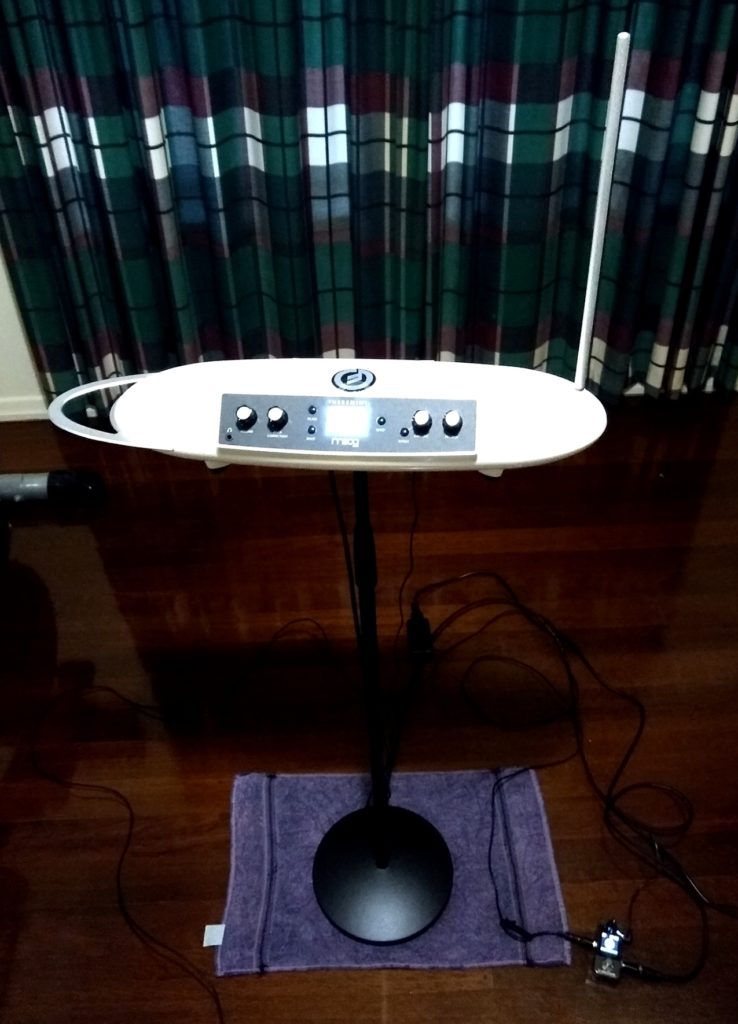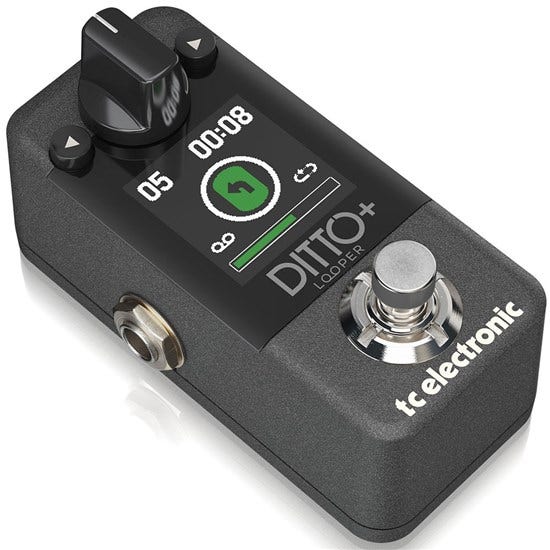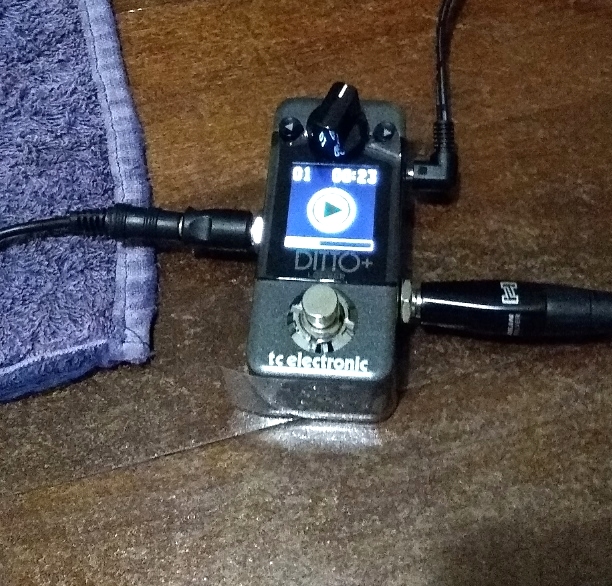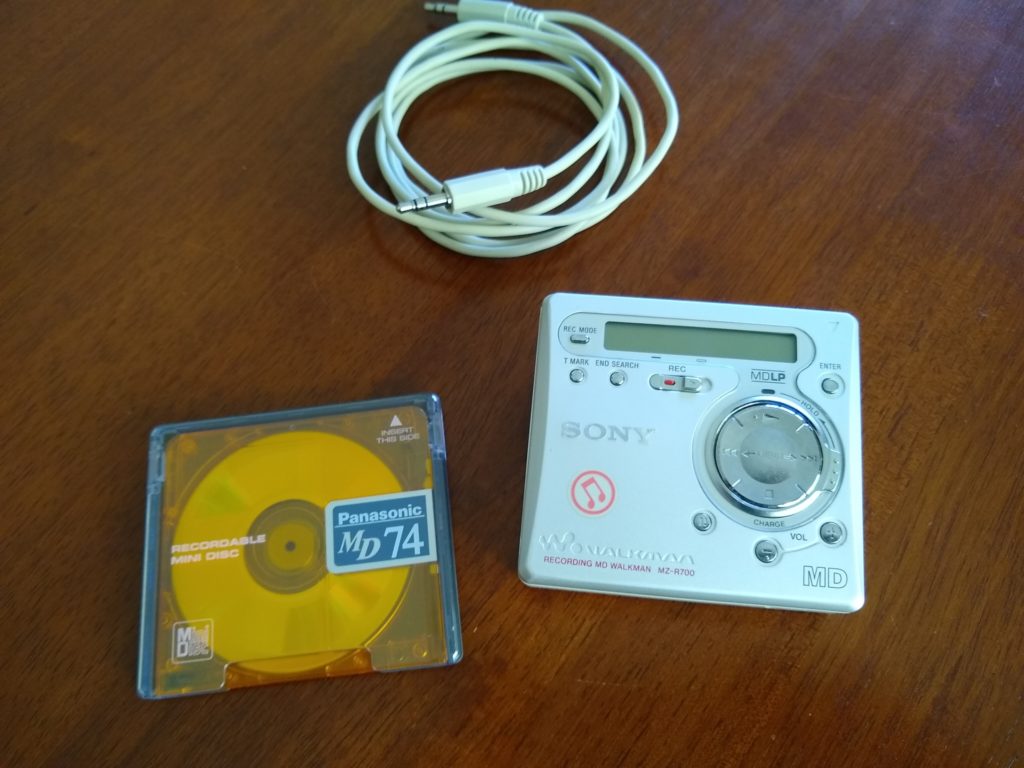I decided, as it is school holidays, to borrow an amplifier from work to try it on my setup.
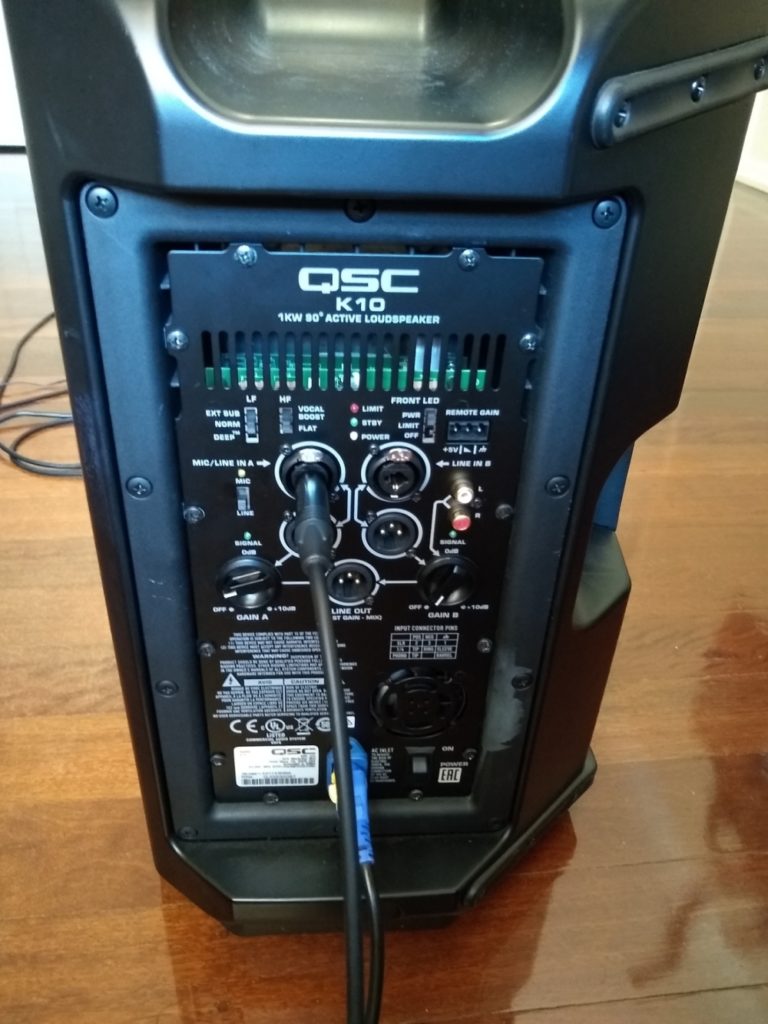
I must admit to knowing nearly nothing about such things, but was offered a QSC K10 PA box – it has a plethora of inputs at the back and I figured I could find something that let me jack in the theremini.
I borrowed an additional guitar lead so I could also inline my Ditto+ looper pedal.
Initially I came out of the L channel of the Theremini, directly into the “Line In” of input A on the Amp. Being careful to turn on the Theremini FIRST then the amp, immediately the wall of sound was deafening – I had to dial “Gain” to one click above off to make the noise controllable and tolerable.
I then calibrated the Theremini (it seemed to lose it’s settings after the initial connection to the amp), and I noticed after calibration the knobs on the Theremini did different jobs, which was odd. After unplugging and re-calibrating, I suspected it had trashed my Firmware, but checked and it is running 1.111 as it supposed to.
I then headed online to do some research, and discovered the the signal OUT of a Theremini is really HOT – waaay higher than a guitar (note to self: remember this if you ever consider jacking into an amp at a gig or anything similarly ludicrous), and it was likely messing with the amp and the electrical feedback was messing with the Theremini. So…
I found my 3.5 to guitar adapter, plugged that into the HEADPHONE socket of the Theremini and connected the amp lead to that and … problem solved.
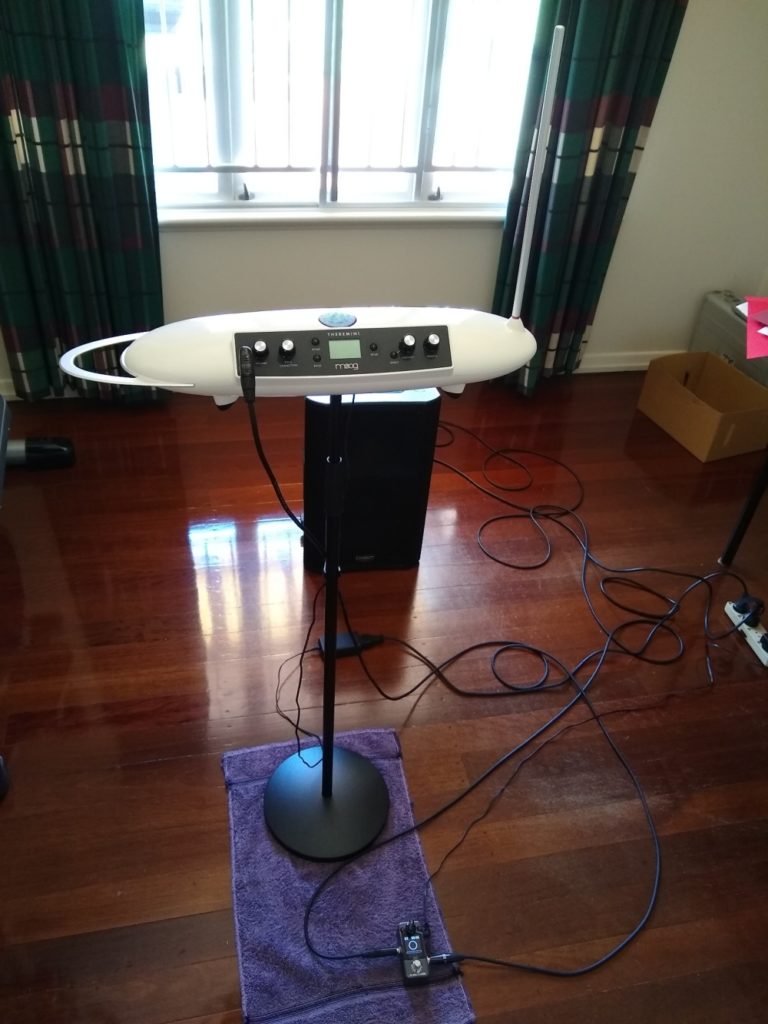
The sound is lush, LOUD and controllable. I think my neighbours are not going to enjoy the next little while, it is like a whole different instrument. The amp brings out out sonic nuances and a richness of tone that is what had originally drawn me to the instrument, so I am a happy chappy.
I am also noticing the RCA stereo input, and might try that out also (as I have a cable from my minidisk recorder that does this particular gender bend, will report back it it is any better.
